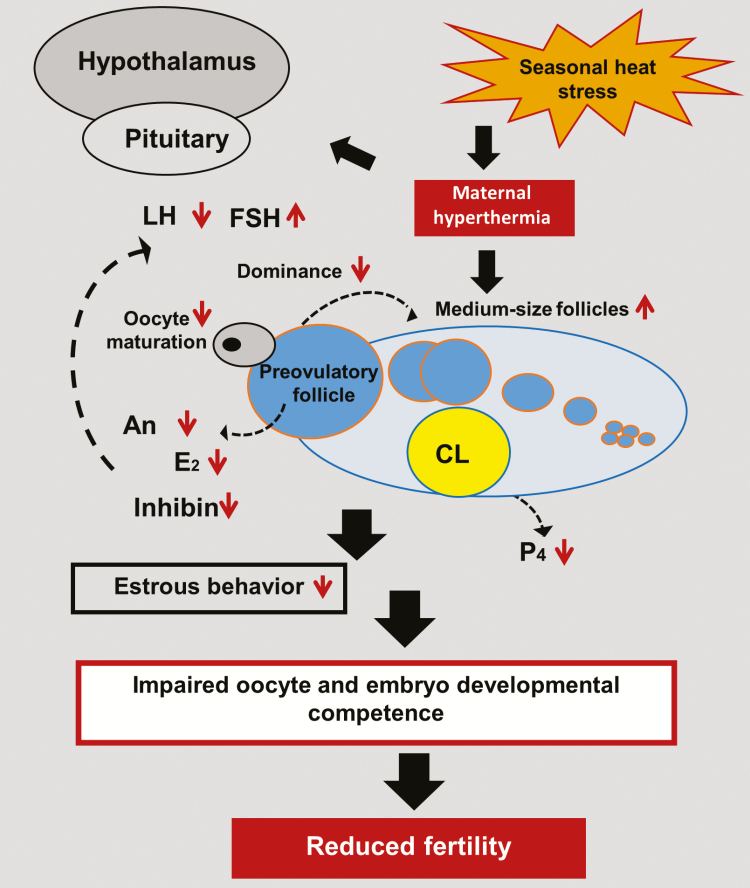Figure 1.
Diagram illustrating the long-term effects of seasonal heat stress on the hypothalamus–pituitary–ovarian axis and its involvement in reducing fertility of lactating cows. Reduced LH secretion is associated with reduced follicular estradiol (E2) secretion. Reduced dominance of the preovulatory follicle is reflected by reduced androstenedione (An) and E2 concentrations and is associated with reduced estrous behavior. Increased number of medium-sized follicles (6–9 mm in diameter), most likely due to reduced dominance, is associated with reduced inhibin and increased FSH concentrations. Reduced oocyte and embryo developmental competence is associated with disruption of nuclear and cytoplasmic maturation. Reduced plasma progesterone (P4) concentration is related to impaired function of the CL. Reduced fertility in heat-stressed cows is presumed to result from additive effects. Adapted from Wolfenson and Roth, 2019.

